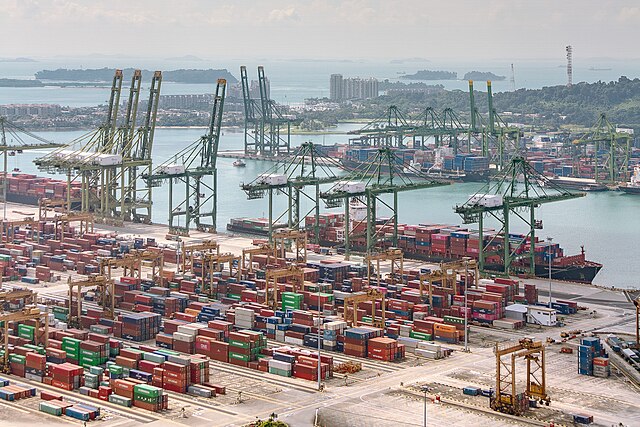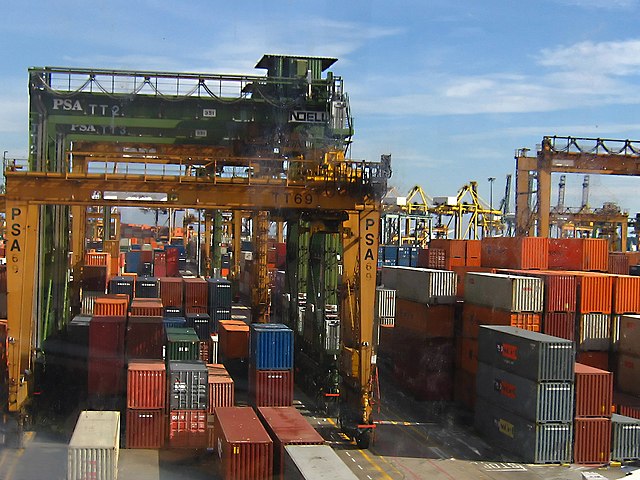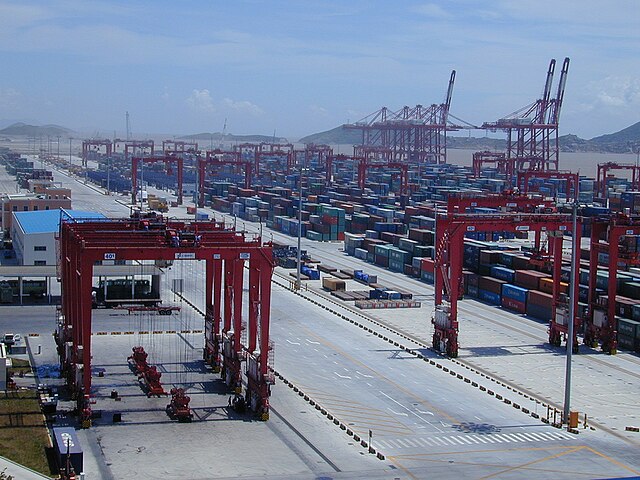The Port of Singapore is the collection of facilities and terminals that conduct maritime trade and handle Singapore's harbours and shipping. It has been ranked as the top maritime capital of the world, since 2015. Currently the world's second-busiest port in terms of total shipping tonnage, it also transships a fifth of the world's shipping containers, half of the world's annual supply of crude oil, and is the world's busiest transshipment port. It was also the busiest port in terms of total cargo tonnage handled until 2010, when it was surpassed by the Port of Shanghai.
Port of Singapore
The Pasir Panjang Container Terminal lies to the left and Jurong Port in the background of this panoramic view of the southwestern part of Singapore, showing the southern parts of Queenstown, and Clementi and Jurong.
The Port of Singapore with Sentosa island in the background.
The M.T. Torben Spirit at anchor in Singapore – photographed on 6 September 2005.
A container port or container terminal is a facility where cargo containers are transshipped between different transport vehicles, for onward transportation. The transshipment may be between container ships and land vehicles, for example trains or trucks, in which case the terminal is described as a maritime container port. Alternatively, the transshipment may be between land vehicles, typically between train and truck, in which case the terminal is described as an inland container port.
Container stacks at Keppel Container Terminal in Singapore
Shanghai Port is the world's busiest maritime container port
Pier T Container Terminal in Long Beach, California, U.S. with intermodal rail in the foreground and gantry cranes behind that







